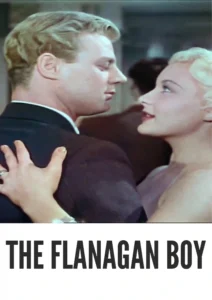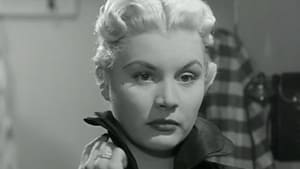Video Sources 0 Views
- Watch trailer
- The Flanagan Boy 1953 Colorized


Download The Flanagan Boy (1953) Colorized HD | Barbara Kelly | Boxing Drama
Synopsis
Table of Contents
Toggle
Step into the smoky, sweat-soaked world of boxing with The Flanagan Boy, a compelling drama from 1953, now brilliantly colorized to bring its raw emotion to life. Featuring standout performances and a gripping narrative, this film offers a powerful look at ambition, betrayal, and the struggle for redemption in the brutal world of professional fighting. Perfect for fans of classic dramas and those seeking a gritty, character-driven story, this HD download delivers an unforgettable cinematic experience.
The Flanagan Boy tells the story of Johnny Flanagan, a young and promising boxer with dreams of making it to the top. Guided by his manager, Sam Watson, Johnny quickly rises through the ranks, displaying both talent and determination. However, the seductive allure of fame and fortune soon threatens to corrupt Johnny’s values.
As Johnny’s success grows, he becomes entangled in a web of deceit and exploitation, orchestrated by unscrupulous promoters and envious rivals. The film explores the dark underbelly of the boxing world, where loyalty is a rare commodity and the pursuit of victory often comes at a steep price. Johnny must confront his own inner demons and decide whether to compromise his integrity for the sake of ambition. The storyline culminates in a climactic showdown that tests Johnny’s courage and forces him to confront the consequences of his choices. Ultimately, The Flanagan Boy is a powerful exploration of morality, ambition, and the enduring strength of the human spirit.
The film boasts a talented cast of actors who vividly bring the story to life:
-
Barbara Kelly as Lorna
-
Tony Wright as Johnny Flanagan
-
Frederick Valk as Sam Watson
-
Richard Dunn as Dumpsey
-
Sid James as Barney
The Flanagan Boy is a gripping boxing drama with elements of film noir and social commentary. It delves into the moral complexities of its characters, set against the backdrop of the gritty boxing scene.
Released in 1953, The Flanagan Boy reflects the social and economic realities of post-war Britain. The film’s themes of ambition, corruption, and the struggle for survival resonated with audiences still grappling with the aftermath of World War II. During this period, British cinema often explored themes of social realism, reflecting the lives and experiences of ordinary people. The Flanagan Boy captures the spirit of this era, offering a glimpse into the challenges and aspirations of a society in transition.
This colorized version of The Flanagan Boy has been meticulously restored using advanced digital techniques. This enhancement adds depth and vibrancy while preserving the film’s original atmosphere. The colorization involved a detailed analysis of the original black and white footage, with careful attention to period accuracy and visual storytelling. The process enhances the emotional impact of key scenes, highlighting the nuances of the actors’ performances and the intensity of the boxing sequences. This painstaking process offers a fresh perspective on a classic film, making it accessible to a new generation of viewers.
-
: Reginald LeBorg
-
: Guy Elmes, Brian Clemens
-
: As told by Max Marcin
-
: Walter J. Harvey
-
: Peter Mayhew
-
: Nettlefold Films
-
: Anglo-Amalgamated Film Distributors
-
: 85 minutes
-
: MP4
-
: HD (1080p)
-
: Compatible with most devices, including smartphones, tablets, computers, and smart TVs.
The Flanagan Boy (1953) has been praised for its compelling storyline, strong performances, and realistic portrayal of the boxing world. While it may not be as widely recognized as some other films of its era, it remains a powerful and engaging drama that explores universal themes of ambition, morality, and redemption. The film’s gritty realism and emotional depth make it a standout example of post-war British cinema.
-
: What is The Flanagan Boy about?
-
A: The Flanagan Boy is a boxing drama about a young fighter who must navigate the corrupt world of professional boxing while staying true to his values.
-
-
: Is The Flanagan Boy (1953) a well-known British film?
-
A: While not a blockbuster, The Flanagan Boy is a respected film known for its realistic portrayal of the boxing world.
-
-
: Is this version of The Flanagan Boy colorized?
-
A: Yes, this version has been professionally colorized to enhance the viewing experience.
-
-
: What makes The Flanagan Boy interesting for classic film fans?
-
A: The Flanagan Boy offers a compelling story, strong performances, and a realistic glimpse into post-war British society and the boxing scene.
-
-
: What is the download format?
-
A: The download format is MP4, which is compatible with most devices.
-
-
: What resolution is the download?
-
A: The resolution is HD (1080p), providing a high-quality viewing experience.
-
Experience The Flanagan Boy Today!








